
Ani Williams July 2012, Rennes-les Bains, France
A Time for Burning—A Time to Return
“Al cap dels sèt cent ans, verdejara lo laurèl.
The laurel will flourish again in 700 years”
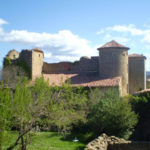
This quote was a prophecy given by the last Cathar parfait Guillaume Bélibaste in 1321 CE. Seven centuries after the 1244 massacre at Montsegur, many souls would be reborn to take up the torch and return to this land called Languedoc, to reclaim the fragments of the Cathar church of love, the peaceful way of the dove.
In 2006 I rented a flat in Rennes-le-Chateau right next to the Magdalene Chapel. The apartment shared a stone wall with the Magdalene grotto and garden and I soon saw the necessity of tending the church garden, which was suffering from lack of care. Shortly after my arrival I met Henry Lincoln while playing harp in the village restaurant, which was run at that time by Rennes researcher and author Jean-Luc Robin. Over the ensuing years, Henry and I have developed a fond friendship.
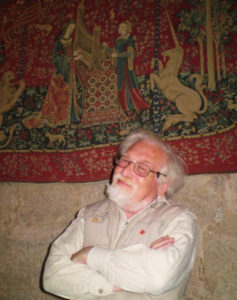
Most readers will know of Henry from his co-authored book ‘Holy Blood, Holy Grail’, although if you mention it to him, he will now insist “it’s nothing more than an hypothesis” and often claimed it was “Rubbish”. But the book sparked a tsunami of interest in the Magdalene mystery, the grail quest and Rennes-le-Chateau. These days, the village is filled with tourists, seekers and wishful diggers for treasure, but more than this, it is a place for dreaming and remembering, a meeting place for writers, researchers and pilgrims on the grail trail.
In the 1970s Henry produced with the BBC and TV2 Danmark a series of films and documentaries, on the Cathars, Nostradamus, Egypt and Rennes-le-Chateau. Since 1982 when Holy Blood, Holy Grail was first published, Henry has written ‘Key to the Sacred Pattern’ and ‘The Holy Place’, in which he presents his discovery of a perfect pentagram in the Rennes-le-Chateau landscape. It is quite extraordinary, as the measurements are exact, identifying five Templar sites, including Tour Magdala, and high points in the landscape. The pentagram embodies the divine harmonic proportion, sometimes called the Golden Section. Henry describes this region as a place where Venus’ perfect harmony and beauty touch the earth as Mary Magdalene.
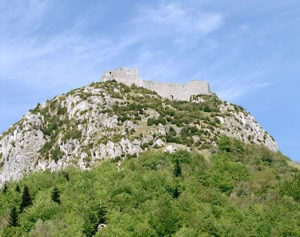
These sites forming a pentagram lie right in the heart of Cathar country and nearby is one of Henry’s favorite places, Montsegur – the last stronghold of the Cathars and the site of the burning in 1244 AD of hundreds of ‘the pure’. In ‘Key to the Sacred Pattern’, Henry compares Montsegur to Masada in Israel, where another persecuted people chose to perish rather than renounce their faith. He writes in ‘Key to the Sacred Pattern’:
“Even today, as one walks the rocky pathway, it is impossible not to sense the presence of those two hundred brave souls who made the bitter choice. For them, the hideous torture of the flames was less painful than abjuring their beliefs. Hand in hand and singing, they walked that fearsome road into Eternity.”
“Each time I tread those stones, I am aware that I am filling the space of a certainty and a strength of faith which is all but incomprehensible in our more ‘enlightened’ age. But across the centuries, the flame still burns at Montsegur and the martyrs have not been forgotten.”

In 1972, Henry Lincoln was on location at Montsegur to film a BBC Chronicle documentary on the Cathars and the fateful burning of the faithful; those who chose to walk into the flames rather than forsake their beliefs. On the final day of filming, Henry stood in the doorway of the great chateau describing how the Cathars descended the path leading to the pyre two by two and singing.
A few days after the BBC crew had returned to London, Henry received a frantic phone call from the director, saying that they needed to return to Montsegur immediately to do a re-shoot. None of the footage from the last scene was usable, as during Henry’s scene describing the Cathar procession to the fire, he appeared to be surrounded by flames. I asked Henry if the BBC had kept any of this discarded film, but, sadly, ended up on the cutting room floor. What a shame that no one at the studio had a sense of the significance of that phenomenal footage!
Few people know another side of Henry, that he is a troubadour at heart and has written poetry since childhood. The following poem ‘There Is A Time For Burning’ Henry wrote in 1972 and he argues that it was not inspired by the Cathar story, but by the simple turning of the seasons in rural England. I wonder though, how much of it springs from another time and a deep memory impressed upon the soul:
There is a time for Burning.
The Earth yields up its life
And when the Gathering has borne all away
And nothing remains but what seems dead and useless
Then….
Then the Earth catches fire
Blazing the fierceness of its cleansing time
Into the sky
Purging
Purging the dead, decaying-seeming dross
To purest, flame-burning, self-consuming ash
The better to prepare for newness after sleep.
There is a time for Burning.
A man’s soul also yields up its Breath
Year after year in blind unknowing
There is a time for Burning.
Somehow – some time – some souls
Ignite to a joy of flame gold life.
There is a time for Burning.
But first some hand must strike the spark,
Or else the time may slip.
There is a time for Burning.
Ah! There is Blessing in the fire
For those who know the burning
For those who know the meaning in the flame.
There is a time for Burning.
There is a time…
There is a Time
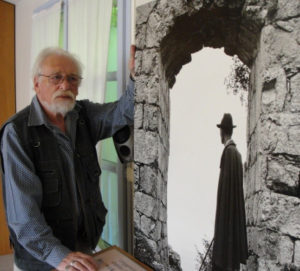
During his research of the Cathar history and legacy for his first BBC ‘Chronicle’ film, Henry visited the home of Deodat Roche, known as ‘the last Pope of the Cathars’. Roche was a dedicated researcher and sincere believer in the lofty ideals of Catharism. In his quest for spiritual truth, Deodat had studied Buddhism, Gnosticism, Manichaeism, anthroposophy, vegetarianism, but after all of these ‘isms’ Roche settled on Catharism as the way that best fitted his deep sensibilities and values. He wrote,
“Before Christ, who was as its Dawning, Catharism had shone its light upon the Brahmans of India, the Magi of Persia, the Essenes of Judea and in Greece upon Pythagoras and Plato.”
Roche was one hundred years young when Henry last visited him in 1977 at his home in Arques, near Rennes-le-Chateau. Recently I asked Henry what he could remember of those meetings with Roche. Sitting in Henry’s garden above the thermal spa village of Rennes les Bains on a hot summer’s afternoon, he shared with me the following:
“Roche was very quiet and self-contained which made him curiously powerful. His tiniest gesture became incredibly potent. Much of the time we just sat, enjoying one another’s presence. A very tall, thin, yet distinguished looking man, he looked rather other-worldly, translucent as if he was ordained with a special quality of light.
He told me that the Cathars preferred to hold their services or rites in the open air, in nature and not in enclosed spaces or churches. He spoke of the Parfaits (the Cathar priests, called Perfects) laying on of hands for healing and they believed that the source of their curative gifts resided in the level of spirit and came from God, not the physical realm.”
Henry explained that although people assume that the Cathares disappeared in 1244 with the fall of Montsegur, there are still remnants of Cathar families throughout this region and the traditions were handed down throughout the centuries. For example, the family Bonzom in Quillan is phonetic for the French word ‘bonshommes’, the good men of the Cathar way. And another Cathar name is in rue Marty in the nearby town of Couiza.
Like Henry and many other lovers of Occitan Catharism, Roche was also a troubadour poet
La Chanson du Silence
Come, we shall hear this eventide, the Song of Silence
The song which begins,
When, in the night, the song of the nightingale draws to its close;
The song which is heard with the gentle growing of the grass,
The song of the living waters,
Which rest, for a moment, against the reed’s reflexion;
The song of the branch
Which trembles and which dances
When freed from the loving burden of a bird;
The secret song cradling the blue-tinged shadow
Of the lily, fading from its spring-time promise,
And awaiting, ere it flowers, for a sign from the bright azure sky.
Réalmont – Summer 1941,
English translation Henry Lincoln, 2012
A Visit to the Deodat Roche Museum
“Throughout my life, I have never ceased to search for a religion of faith and of justice and with no dogma. For me, it is the spirituality of Catharism which comes closest to this natural religion.”
Deodat Roche
In June of 2012, Henry and I visited the Deodat Roche Museum in Arques, a little village in the Aude region of the Languedoc and where Roche began and ended his centurion years. After much prodding, I finally persuaded Henry to venture into this self-imposed ‘forbidden territory’. He was quite upset that the new museum had totally destroyed the character of Roche’s lovely village home and turned it into a sterile, modern edifice. Once inside though, Henry was impressed with the library of Roche’s books and articles and found the gallery of photographs of him brought back fond memories of their visits together.
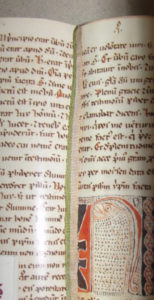
We found ourselves perusing the Cathar Bible, which the Cathars had translated into their own Occitan language. It was illustrated with lovely medieval images and one that caught our eye was a large red fish. The caption under the copy of the bible indicated it was from the Rituel Cathare de Lyon in the Bibliotheque Municipale de Lyon. Next, Henry spotted something unusual inscribed underneath a carved cross which was perhaps a tombstone or marker stone of a Cathar family. He said the lines formed the Egyptian hieroglyphs Nefer, meaning God, and Meri, meaning beloved and so – Beloved of God.
These hieroglyphs were surrounding a glyph that looked like a fish….possible clues to the Cathar awareness of Jesus’ knowledge received from his time in Egypt’s temples? I remembered Henry telling me about that moment so many years ago when he had a first meeting with Michael Baigent and Richard Leigh in the garden of his home in the English countryside. They were discussing their respective research on the Rennes-le-Chateau mystery and the possibility of a royal bloodline from the House of David. During this meeting, Henry had said, “There is something ‘fishy’ going on here”. That moment and statement was the seed which would grow into the pivotal book in this modern grail quest, ‘Holy Blood, Holy Grail’.

Images of various other artifacts in the Roche Museum included a metal pentagon and a 12th century stone ‘colombe’ or dove. There are many references to the pentagram being a significant symbol in Catharism. Firstly, that it represents perfection, the goal of the Pure Ones. The pentagram embodies the Divine Proportion, sometimes called the Golden Section. This is the proportion found in the graceful spiraling forms of nature, the harmonics of music and is basically the principle of beauty within all of creation. The pentagram is also a reference to the Hermetic wisdom of Egypt and embraced by Platonists and Pythagoreans and the Kabbalists. Perfection as it refers to one’s spiritual path was often called The Way and the path of initiation, the Ancient Road.
Elizabeth Van Buren adds in her book ‘Sign of the Dove’: “The Gnostics taught that the pentagram was the “Passport to the Kingdom of Light”
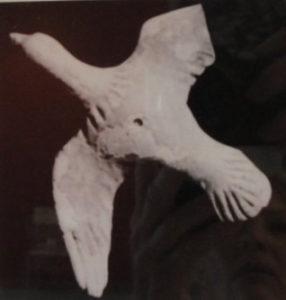
In the Roche museum there was a small stone carving of a white dove, said to have been found at Montsegur. We often see the dove representing Holy Spirit, the dove as Sophia descending during Baptism, bathing the initiate in pure light and in the waters of the spirit. The symbolism of the dove has ancient roots that can be traced to Egyptian and Sumerian cultures. The Sumerian word for dove is Hu. The Egyptian hieroglyph for Hu is depicted as a dove and Iahu is listed as a name for Isis in Deimel’s Akkadian-Sumerian Glossary. Ia Hu is a Sumerian phrase meaning ‘exalted dove’.
“The Moon-goddess of Asiatic Palestine was worshipped with doves, like her counterparts of Egyptian Thebes, Dodona, Hierapolis, Crete and Cyprus… Ia-Hu stands for the Moon-goddess as ruler of the whole course of the solar year.”
Introduction to Part III A Troubadour’s Journey Through Cathar Country:
The dove has a long association through many eons and cultures with the spirit of purity and love. Yona or Ionah, also meaning dove, is also the name Jonah or Ionnes, John. We can relate the dove to John, and perhaps for the Cathar, the Secret Book of John. Many legends speak of the lost treasure of Montsegur that was carried over the mountains to the grottos or chateaux of the Sabartez. Some say the precious treasure was a Lost Gospel of Saint John.
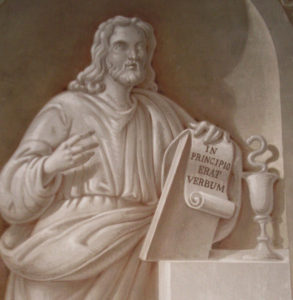
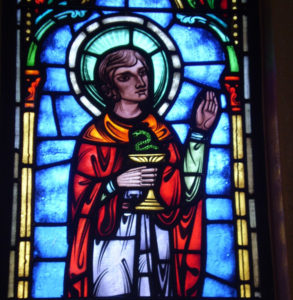
Continue to Part III A Troubadour’s Journey in Cathar Country:
https://aniwilliams.com/part-iii-a-troubadours-journey-in-cathar-country/
Credits
Article ©2012 Ani Williams
All photos are copyright Ani Williams

